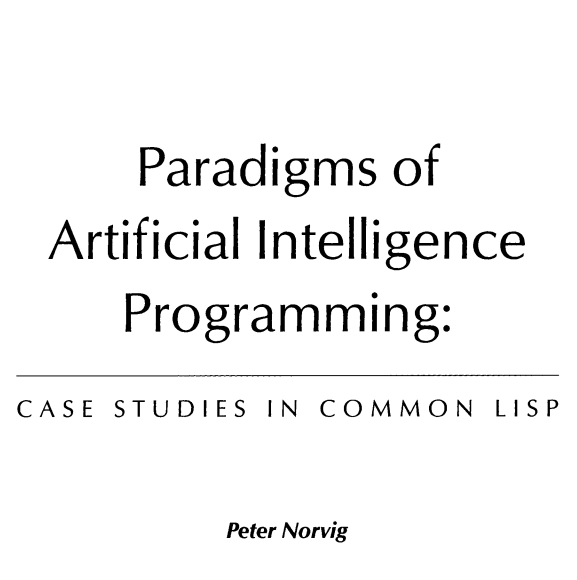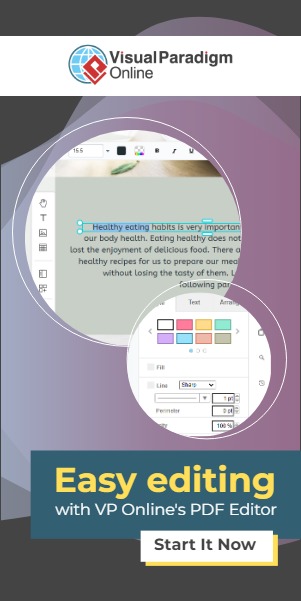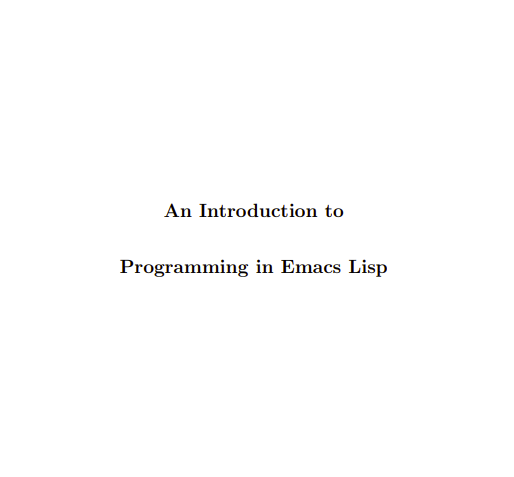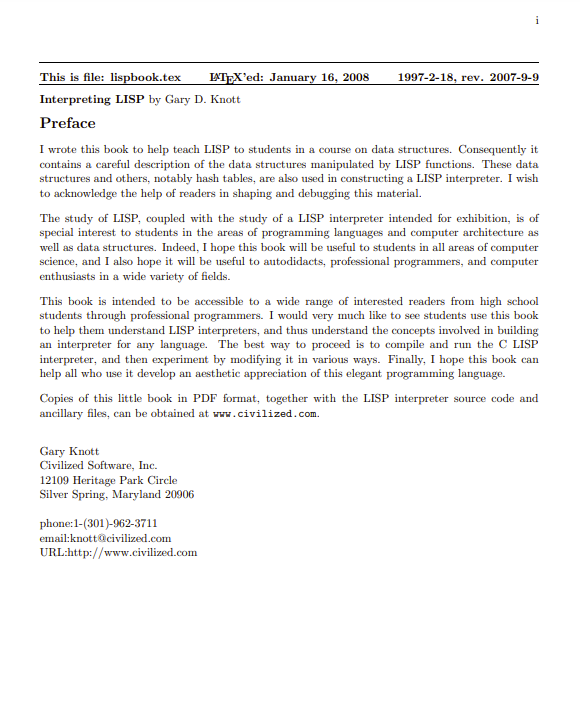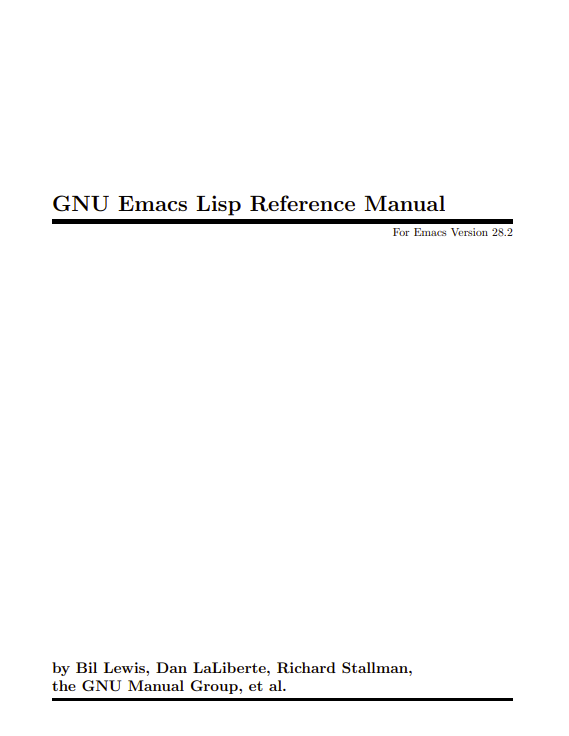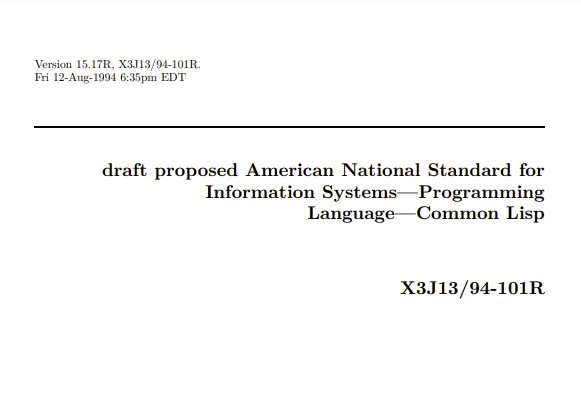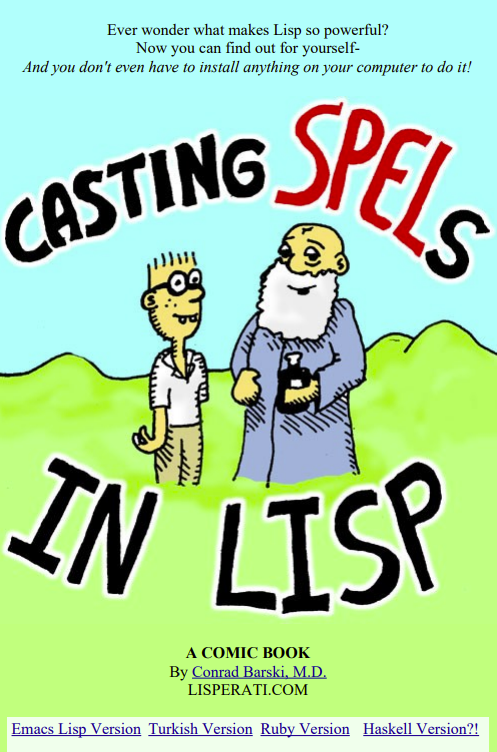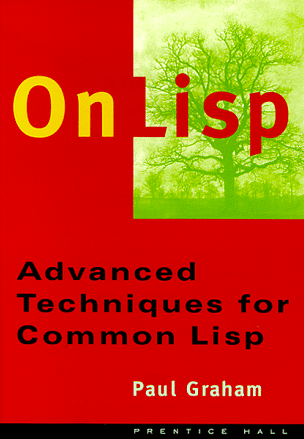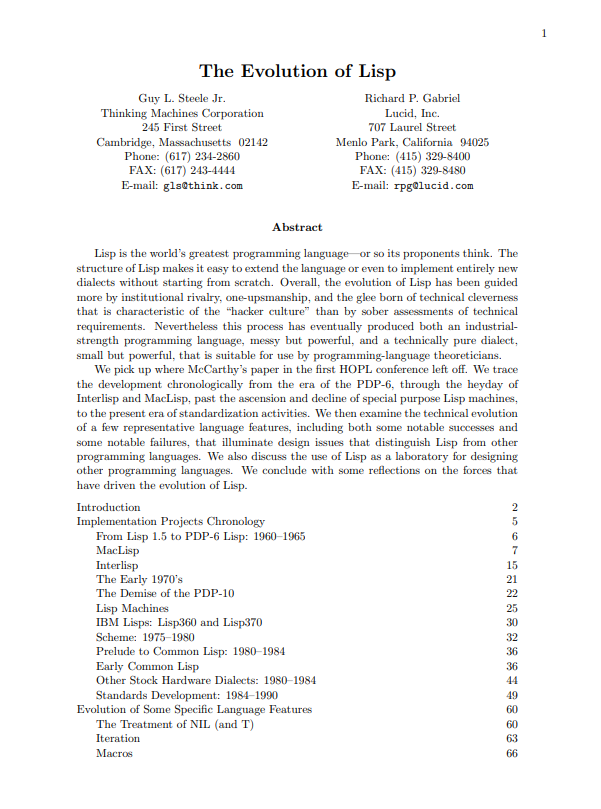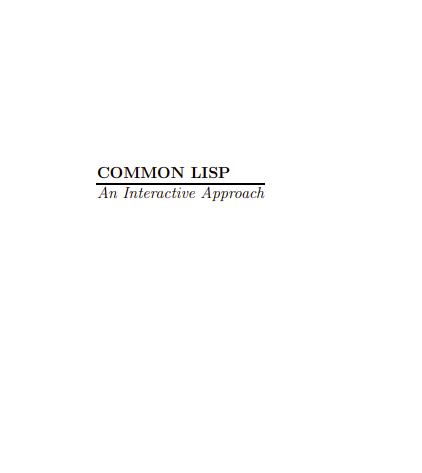This book is concerned with three related topics: the field of artificial intelligence, or AI; the skill of computer programming; and the programming language Common Lisp. Careful readers of this book can expect to come away with an appreciation of the major questions and techniques of AI, an understanding of some important AI programs, and an ability to read, modify, and create programs using Common Lisp. The examples in this book are designed to be clear examples of good programming style—paradigms of programming. They are also paradigms of AI research—historically significant programs that use widely applicable techniques to solve important problems.
Just as a liberal arts education includes a course in “the great books” of a culture, so this book is, at one level, a course in “the great programs” that define the AI culture.^ At another level, this book is a highly technical compendium of the knowledge you will need to progress from being an intermediate Lisp programmer to being an expert. Parts I and II are designed to help the novice get up to speed, but the complete beginner may have a hard time even with this material. Fortunately, there are at least five good texts available for the beginner; see page xiii for my recommendations.
All too often, the teaching of computer programming consists of explaining the syntax of the chosen language, showing the student a 10-line program, and then asking the student to write programs. In this book, we take the approach that the best way to learn to write is to read (and conversely, a good way to improve reading skills is to write). After the briefest of introductions to Lisp, we start right off with complex programs and ask the reader to understand and make small modifications to these programs.
The premise of this book is that you can only write something useful and interesting when you both understand what makes good writing and have something interesting to say. This holds for writing programs as well as for writing prose. As Kernighan and Plauger put it on the cover of Software Tools in Pascal:
Good programming is not learned from generalities, but by seeing how significant programs can be made clean, easy to read, easy to maintain and modify, human-engineered, efficient, and reliable, by the application of common sense and good programming practices. Careful study and imitation of good programs leads to better writing.
The proud craftsman is often tempted to display only the finished work, without any indication of the false starts and mistakes that are an unfortunate but unavoidable part of the creative process. Unfortunately, this reluctance to unveil the process is a barrier to learning; a student of mathematics who sees a beautiful 10-line proof in a textbook can marvel at its conciseness but does not learn how to construct such a proof. This book attempts to show the complete programming process, “warts and all.” Each chapter starts with a simple version of a program, one that works on some examples but fails on others. Each chapter shows how these failures can be analyzed to build increasingly sophisticated versions of the basic program. Thus, the reader can not only appreciate the final result but also see how to learn from mistakes and refine an initially incomplete design. Furthermore, the reader who finds a particular chapter is becoming too difficult can skip to the next chapter, having gained some appreciation of the problem area, and without being overwhelmed by the details.
This book presents a body of knowledge loosely known as “AI programming techniques,” but it must be recognized that there are no clear-cut boundaries on this body of knowledge. To be sure, no one can be a good AI programmer without first being a good programmer. Thus, this book presents topics (especially in parts III and V) that are not AI per se, but are essential background for any AI practitioner.
